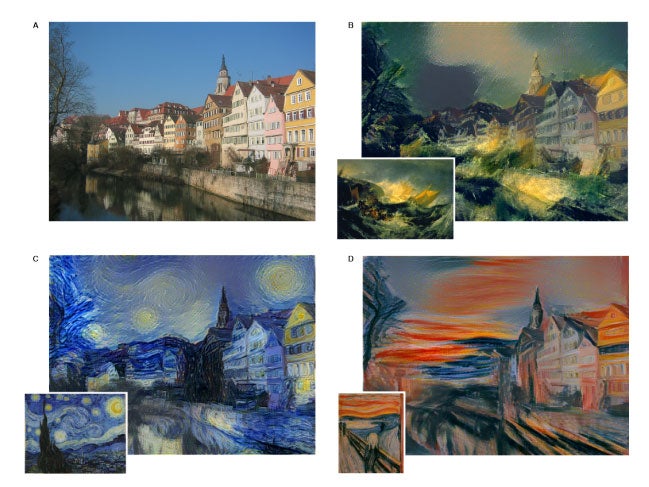Algorithm can turn any picture into a Picasso or work by any other painter
The robot painter could be a step towards understanding what goes on in painters’ minds when they create new works

An algorithm has been created that can turn any picture into a painting, and can learn the style of artists so that it can replicate them.
While some humans have mastered the ability to make visual experiences into paintings, by taking the content and rendering it in a style, scientists haven’t been able to replicate the same kind of artistic ingenuity using robots. But now a group of researchers have put learning computers to ork in a way that can create artistic images.
The algorithm uses deep neural networks — computers that use a series of layers to learn like humans do. The same kind of technology was recently shown off by Google, when it turned its robots on themselves and create trippy photos.
The new painting algorithm takes pictures, understands their style and then combines the two — creating a version of the photograph as drawn by whoever it has been shown the work of.

The algorithmic artists uses “neural representations to separate and recombine content and style of arbitrary images, providing a neural algorithm for the creation of artistic images”, according to the researchers.
In doing so, it creates pictures that have “striking similarities” to “biological vision”, they said. As such, it might offer a path towards “an algorithmic understanding of how humans create and perceive artistic imagery” — helping us understand the urge and skill to create in humans.
The team showed how the algorithm could take a single picture of a street in Germany, then render it in the style of selected painters. It re-drew the picture in the style of paintings by Van Gogh, Picasso and Munch.
Join our commenting forum
Join thought-provoking conversations, follow other Independent readers and see their replies
0Comments